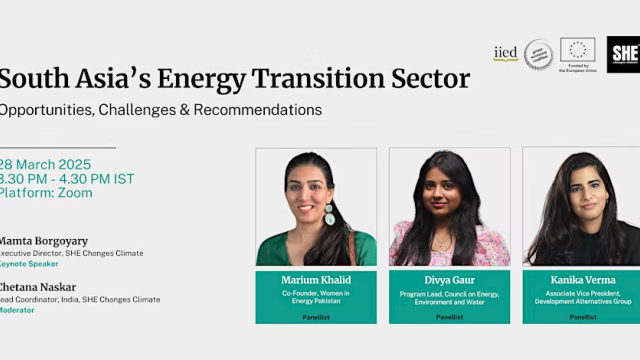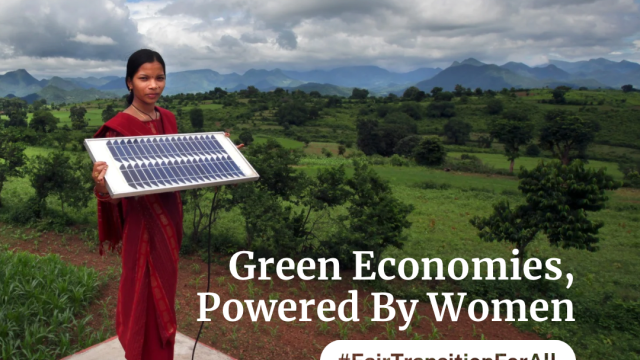Investing in a just transition
A new initiative is laying out the case for investor action on climate change, by providing robust analytics and guidance to markets.

Across the world, the investment tanker is turning to confront the threat of climate change. Trillions of dollars in investment funds are now backing the shift to a resilient zero-carbon economy. The reason is simple: climate change wrecks the ability of institutional investors to deliver long-term returns for the world’s savers and pensioners.
Yet the road ahead got bumpier last year with President Trump’s decision to pull the US out of the Paris Agreement. Among the many reasons given by Trump was his claim that compliance would cost the US millions of jobs, including in the coal industry. According to a fact-check conducted by Germany’s Environment Ministry, President Trump’s assertions on job losses are “doubtful and misleading”, relying on research generated by anti-climate organisations.1
At a macro level, it’s clear that the benefits of the transition will far outweigh the costs. Managed well, the transition will generate additional high-quality jobs and reduce inequality. But there will still be significant transitional implications for key sectors, regions and countries. Poorly managed, this could result in “stranded workers” and “stranded communities” as well as “stranded assets,” slowing the transition itself, while contributing to economic stagnation and potential instability.
“ There has been a lack of robust analytics and guidance to enable investors to play an effective role - until now.”
To overcome this challenge, the goal of a just transition for workers and communities was included as part of the Paris Agreement on Climate Change. A growing number of trade unions, governments and businesses are now taking action to make this a reality - in essence, delivering decarbonisation with inclusion. Over the past year, leading investors have recognised the need to take action too. The transition has both environmental and social dimensions – and for investors, it’s important to bring these together as part of a holistic approach to responsible investment. So far, however, there is a lack of robust analytics and guidance to enable investors to play an effective role.
The Investing in a Just Transition initiative aims to fill this gap. Designed by the Grantham Research Institute at the London School of Economics and the Initiative for Responsible Investing at the Harvard Kennedy School the initiative aims to make the case for investor action and set out practical options for action. Importantly, the initiative is being delivered in partnership with the UN-backed Principles for Responsible Investment as well as the International Trade Union Confederation.
Already a compelling case for action is emerging. In our first discussion paper, we set out six reasons why investors should expand the scope of their climate strategies so that they are aligned with the imperative of a just transition:
- Materiality: the just transition addresses material issues of human resource management and community relations in the transition process.
- Duties: the just transition incorporates key international norms which investors have a duty to respect, notably around human rights and labour standards.
- Opportunities: the just transition provides a lens for new place-based investments in infrastructure, real estate, private equity, bonds, impact investments and community assets.
- Beneficiaries: the just transition responds to growing beneficiary preferences for responsible investment as well as the specific interests of savers in affected sectors and regions.
- Systemic Risks: the just transition enhances understanding of systemic risks by connecting the climate change and inequality agendas.
- Societal Goals: the just transition offers a platform for collaboration with other stakeholders to deliver the interconnected agenda of the Sustainable Development Goals.

Importantly, investors don’t need to reinvent the wheel when contributing to the just transition. There are well-established approaches that investors have developed to social challenges: the task is now to join the dots with the climate agenda. The four main ways in which investors can take action are set out in the table below.
1. Investment strategy
- Include just transition principles in a statement of investment beliefs.
- Incorporate just transition principles within climate policy statements.
- Making just transition a part of investor scenario exercises on climate change
- Integrate just transition into human resource management processes internally.
- Embed just transition principles into consultant and manager searches externally.
- Communicate action on the just transition with clients, savers and beneficiaries.
2. Investor engagement
- Broaden the scope of climate engagement to include the social dimension, using the framework of the Task Force on Climate-related Financial Disclosures (TCFD): strategy (including scenarios), risk management, governance and metrics.
- Carry out initial social and employment assessments of climate-exposed assets, covering worker engagement, skills development, occupational health and safety, social protection labour standards, social dialogue, supply chain and community relations.
3. Capital allocation
Incorporate just transition principles within both core and thematic approaches within:
- Fixed income (including green and social bonds)
- Public equity (including large and small caps)
- Private equity/venture capital (including impact investing)
- Real assets (including infrastructure, property, land and forestry)
- Cash (including commercial banks and community development finance institutions)
4. Policy dialogue
- Involve investors in international policy discussions at the ILO, UNFCCC and G20.
- Encourage development finance institutions to develop strategies for the just transition.
- Support the inclusion of the just transition in national climate plans.
- Channel proceeds of public green bonds to just transition activities.
- Focus on the just transition within national roadmaps for green and sustainable finance. Develop regional strategies to attract investors into place-led green assets.
Actions such as these will increasingly become part of the way in which investors can help to accelerate the transition to a zero-carbon economy as part of the wider shift to a more inclusive and sustainable financial system. To enable this to happen, the initiative’s draft guidance for investors and the just transition will be launched at the December 2018 climate conference (COP24) in Katowice.
The first discussion paper on Investing in a Just Transition can be found here. Do let us know what you think - either in the comments below, or via our contact form.
Nick Robins is Professor in Practice with the Grantham Research Institute at the London School of Economics.
Vonda Brunsting is Program Manager for Just Transitions with the Initiative for Responsible Investing at the Havard Kennedy School.
David Wood is the Director of the Initiative for Responsible Investing at the Harvard Kennedy School.
Image credit: Fabrizio Verrecchia on Unsplash
Footnotes
German Federal Ministry for the Environment, Nature Conservation and Nuclear Safety: Fact-checking Trump's Paris Speech, June 2017


